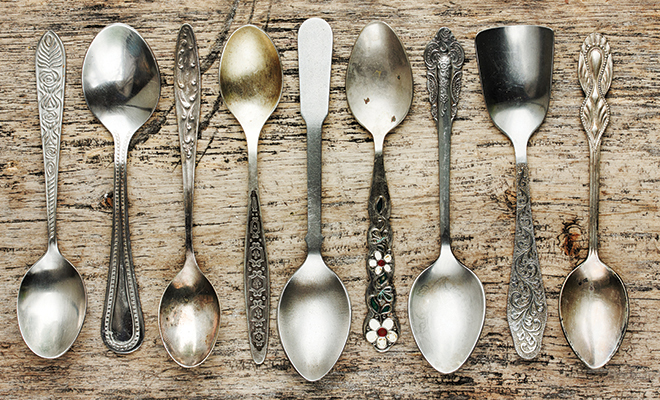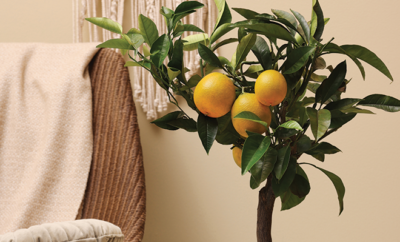
Collecting the Proverbial Silver Spoon
There are many things we associate with gracious living: lovely tablescapes, heirloom jewelry and antiques that have passed through a past generation’s hands. Many of them are created of sterling silver, a precious metal that withstands the test of time
Whether they’re contemporary Tiffany & Company jewelry, antique tableware or your grandmother’s silver flatware, articles of sterling silver remain highly collectible and long lasting. Here are some tips for collecting and caring for your sterling silver treasures.
What is sterling silver?
Originating in Great Britain, sterling silver is a finely crafted, time-honored traditional metal that is valuable due to its pure, durable material. The highly collectible silver lasts for generations and becomes more attractive with regular use. Specifically, sterling silver is a composition of metal that is 92.5 percent silver and 7.5 percent of another type of metal, typically copper. This composite makes the silver stronger.
The composition standard for sterling dates to 1300, when King Edward I established a trade practice rule for silversmiths in England. Pure silver is malleable and easily damaged, so the 7.5 percent non-silver portion of sterling increases each piece’s durability. Value isn’t inhibited by the small amount of non-silver because the price is affected by the skill of the craftsperson and the intricacy of the design. However, the value of silver may vary depending on how the silver market is trading. If the sterling piece is an antique item or a collectible item created by a famous designer, the piece may be considered more valuable.
Hallmarks
An understanding of the distinction between sterling silver and other kinds of silver can be gained through examining hallmarks. These are marks that mimic a small stamp, generally found on the back or underside of the item. Typically, sterling silver made in the USA after the 1850s always contains a sterling mark, which could say “Sterling,” “.925” or possibly the fraction “925/1000.” Antique English sterling silver is marked differently, with a series of four or five small hallmarks. The series of marks include a lion; the rest designate the city of origin, the maker and the year of manufacture. If a hallmark is not present on an item, the piece is most likely not sterling silver. A test can be done with acid by a professional to determine the item’s silver content if the quality is unclear.
Patterns
Sterling silver items are decorated with motifs and patterns embellishing the precious metal. Master silversmiths throughout history have carefully hand-tooled each pattern to create an original and unique design. There are several different processes in which sterling silver patterns are crafted, including etching, embossing, engraving and soldering. Etching is a method that’s appropriate for customizing a product with a logo or seal, which is etched into a piece by transfer from an engraving plate. Embossing is a practice that requires crafting on the back of the piece in relief. Engraving means cutting a metal surface with tools to remove metal; this is best for monograms and inscriptions. Soldering allows bases, handles and basic fittings to be attached by fusing metallic surfaces with a soldering iron.
The most popular sterling flatware patterns can be found easily online; a few traditional patterns are Reed and Barton’s Francis I, Chantilly by Gorham, Prelude by International Silver and King Richard by Towle Silversmiths. Contemporary patterns are Kirk Stieff Corporation’s Paramount, International Silver’s Rhapsody and Gorham’s Edgemont. Every brand and designer will have different, unique patterns.
Collecting
Knowing the notable brands and designers associated with sterling silver, such as Reed & Barton, Kirk Stieff Corporation, Gorham and Tiffany and Company, will aid in collecting the most valuable pieces. These companies are well known for producing flatware, tableware and sterling silver jewelry. Each company’s designs change with time due to popular tastes or design inspirations over the years. Most collections are themed around a time period or designer; collectors typically like to follow and collect a full set of the motif.
Care
With proper care, sterling silver pieces will last for generations. Natural dulling occurs when silver sits. To clean the patina, use polishes created to specifically remove tarnish. Jewelers and upscale retailers stock fine silver polishes, cloths or solutions to clean silver. Avoid exposing silver to household chemicals such as bleach or ammonia, as these chemicals damage silver. Wearing silver jewelry pieces often can help prevent tarnish buildup. Houseware and tableware pieces need regular use and cleaning to achieve a long-lasting, sparkling appearance.
Storage
If sterling pieces are not on display or being used, proper storage can help maintain quality. It’s important to keep sterling silver away from dampness and direct sunlight. Choose a dark, dry storage place and wrap pieces in silver cloth for protection; avoid plastic bags or plastic wrap, as they can cause discoloration.
When you locate and secure that treasured sterling pitcher or julep cup, now you’re prepared to display it proudly, filled with fresh flowers or your favorite beverage, and to make it an heirloom for your family. ■
Sources: bluenile.com, collectorsweekly.com, ebay.com, lifetimesterling.com, nytimes.com and silverqueen.com.







